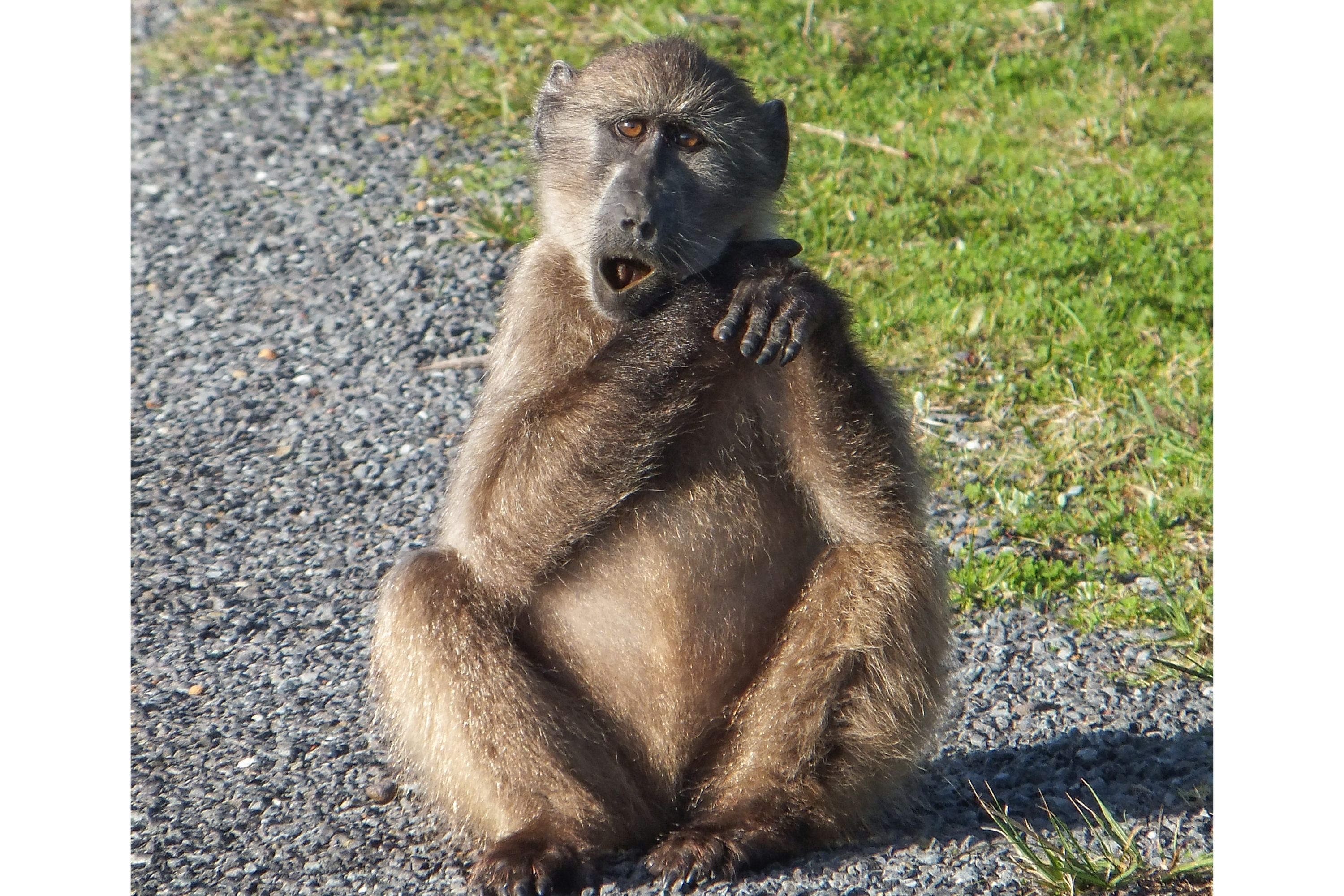Chacma baboon
(Papio ursinus)

Description
The chacma baboon (Papio ursinus), also known as the Cape baboon, is, like all other baboons, from the Old World monkey family. It is one of the largest of all monkeys. Located primarily in southern Africa, the chacma baboon has a wide variety of social behaviours, including a dominance hierarchy, collective foraging, adoption of young by females, and friendship pairings. These behaviors form parts of a complex evolutionary ecology. In general, the species is not threatened, but human population pressure has increased contact between humans and baboons. Hunting, trapping, and accidents kill or remove many baboons from the wild, thereby reducing baboon numbers and disrupting their social structure. The chacma baboon is perhaps the longest species of monkey, with an adult body length of 50 to 115 cm (20 to 45 in) and tail length of 45 to 84 cm (18 to 33 in). It also one of the heaviest; the male weighs from 21 to 45 kg (46 to 99 lb) with an average of 31.8 kg (70 lb). Baboons are sexually dimorphic, and females are considerably smaller than males. The adult female chacma weighs from 12 to 25 kg (26 to 55 lb), with an average of 15.4 kg (34 lb). Adult males can in some instances be about twice as long and three times as heavy as adult females. It is similar in size to the olive baboon, averaging slightly higher in mean body mass, and of similar weight to the more compact mandrill, the males of which weigh on average about 1 kg (2.2 lb) more than a chacma baboon, the females weigh 3 kg (6.6 lb) less than the female chacma. While the mandrill is usually crowned the largest of all modern monkeys, going on total length and average (but not maximum) body weight between the sexes, the chacma baboon appears to be the largest extant monkey. The chacma baboon is generally dark brown to gray in color, with a patch of rough hair on the nape of its neck. Unlike the males of northern baboon species (the Guinea, hamadryas, and olive baboons), chacma males do not have a mane. Perhaps the most distinctive feature of this baboon is its long, downward-sloping face. The canine teeth of male chacma baboons have a mean length of 3.86 ± 0.30 cm (1.52 ± 0.12 in) at the time they emigrate from their natal troop. This is the time of greatest tooth length as the teeth tend to wear or be broken thereafter. The three subspecies are differentiated by size and color. The Cape chacma is a large, heavy, dark-brown, and has black feet.
Taxonomic tree:







